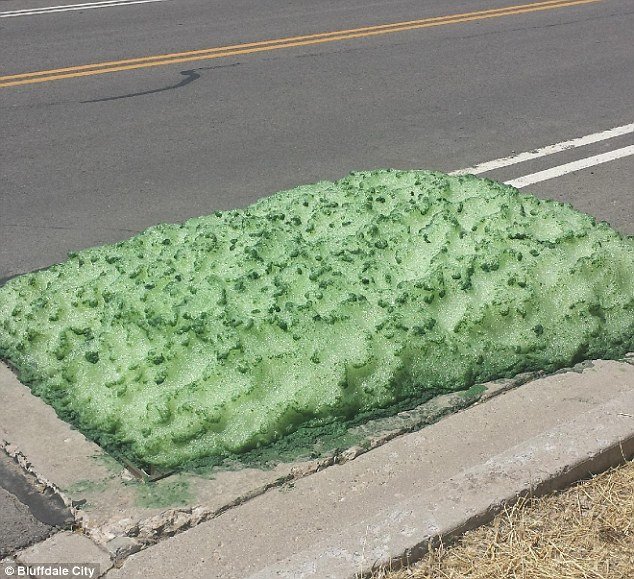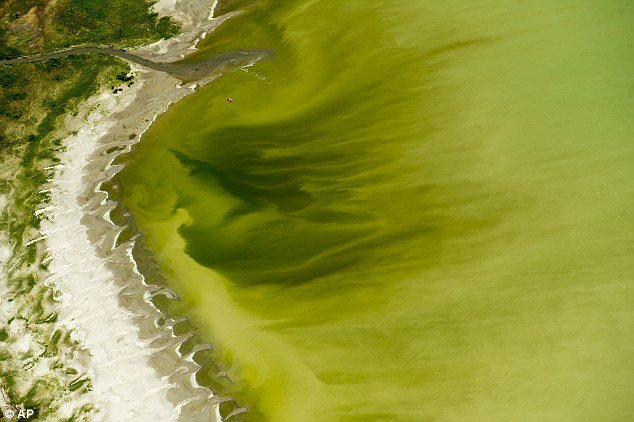
The Salt Lake County Health Department immediately sent both its emergency response team as well as scientists to test the bright green foam after it was reported in the Bluffdale neighborhood.
Early reports indicated that the foam was caused by a toxic algae bloom that currently covers 90 percent of Utah Lake - and has already caused more than 100 people to fall ill.
The foam was sourced to the nearby Welby Jacob Canal, which feeds water to local farms. The canal is connected to the Jordan River, which is connected to Utah Lake.
'It's certainly possible that the water in the Welby Canal here does have some of that particular harmful algae that produces toxins in it,' department official Nicholas Rupp told Fox 13 Now.
But Rupp said the foam is more likely the result of a recent moss removal process the canal underwent earlier this month.
'The chemicals that they use for the moss prevention process foams and causes a foaming action,' Rupp said.
But just because the toxic algae didn't cause the green foam doesn't necessarily mean it isn't present in the canal.
Rupp said the department tested water in the canal just to make sure. Results are expected in the next few days, according to KUTV.
The foam began to recede after the irrigation line to the canal was shut off, Bluffdale city engineer Michael Fazio told KSL.
Firefighters protected themselves with masks and gloves while hosing the green substance back into the sewer.

The department said the foam does not pose a concern to public health at this time.
Meanwhile, all activities at Utah Lake have been canceled indefinitely after it was revealed the toxic algal bloom covering the water was becoming more hazardous.
Cyanobacteria cells release higher levels of toxins into the water as they die - making the water more lethal even as the number of cells drop in the lake, which lies in Utah Valley.
More than 100 people exposed to the bloom called the Utah Poison Control Center last Friday, reporting symptoms of vomiting, diarrhea, fever, skin and eye irritation and rashes.
Although no definitive link has yet been made with the symptoms and the bloom, officials said they were consistent with cyanotoxin exposure.
The majority of samples collected last Thursday exceeded the 'medium risk' threshold of 100,000 cells defined by the Worth Health Organization and the Utah Department of Health guidelines.

One such sample contained nearly 700,000 cyanobacteria cells.
Even when algae blooms don't appear on the surface of the lake, they could still be present - as cyanobacteria can sink in certain conditions.
'Toxins can be at their highest after a bloom has subsided,' warned a release issued by the Department of Environmental Quality this week.
Sampling collections continued on the lake last week, while crews from the Utah Division of Water Quality also observed additional bloom areas from an aerial viewpoint.
Water in the Jordan River, the lake's only river outlet, as well as canals fed by the lake were also being tested to see if the bloom was spreading, according to the Salt Lake Tribune.
The Utah Department of Agriculture and Food strongly advised farmers and ranchers to avoid using water from the lake to irrigate crops and give to livestock until results are made available next week.
The Salt Lake County Health Department said drinking water was not affected by the bloom.
Recent studies have linked cyanobacteria-producing toxins to Amyotrophic Lateral Sclerosis, or Lou Gehrig's disease, which causes the death of neurons that control voluntary muscles.



Reader Comments
to our Newsletter